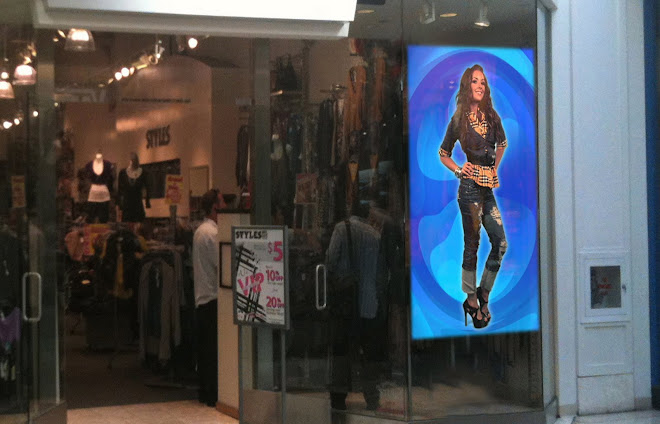Touch screens are becoming more and more commonplace in the retail environment. In the search for novelty and "customer engagement" retailers and businesses of other types have installed a variety of touch screen displays for information gathering and general amusement.
When it comes to information gathering, such as kiosks, the touch screen can be useful, but not really necessary. I happen to prefer pushing buttons to using a touch screen when it comes to getting information or making a transaction. I like the sensation of feeling or hearing a click when I push on a button. Touch screens provide no such tactile satisfaction. In fact, in a lot of cases, they simply don't work very well and require multiple touches or swipes of the finger to produce the desired result.
Talk about FMOT (First Moment of Truth) failure.
Then there's the touch screen "customer engagement" display: Come and touch the display to play some cheesy game that's not as good as the games I have at home, or to achieve some unimpressive visual result that does nothing for me, produces nothing for me (other than perhaps a momentary diversion) and gains me nothing.
Welcome to customer DIS-engagement.
Don't ever forget: This generation of people cannot be entertained into doing business with you.
Show me something useful, valuable and relevant to ME! If you try to get me to "touch", you'd better make it worth my while.
Remember, I carry a fantastic touch screen device in my pocket (my iPhone/Android, etc.) that I have customized to my own needs and interests (apps) and I'm in a hurry, so your touch screen had better do something incredible, or you run the fatal risk of becoming irrelevant and/or annoying to me.
Far better to utilize the incredible power of digital visual displays to entice, seduce, interest, inform or engage me. Show me or tell me something interesting and important to me, and then I'll think about buying from you. I want to know more about your product, service or offer as it relates to my wants, needs and preferences. That is all a function of powerful initial display/messaging, which could then possibly could lead to me wanting to "touch".
As businesses and digital communicators we can't put the cart before the horse. "Touch" isn't necessarily a problem, but it had better lead to a solution.
Thursday, May 24, 2012
Tuesday, May 8, 2012
Change and Motion
One of the great advantages of Digital Signage is that you have the ability to change message. This does wonders for the sheer volume of messaging afforded to the messager; but it is not by any means the only advantage.
Research has shown that while ongoing motion in images and messaging does not necessarily add to attraction, the onset of motion definitely increases attraction in viewers.
So a big part of the power of Digital Signage is the ability to attract attention by using motion onset, or by the motion inherent in the changing of the message from one message (or screen) to the next.
This, in itself, is a quantum leap for advertisers, display, and other visual communicators.
As this video of the Digital Mannequin illustrates, when that "live" model is up front, doing her thing, the rest of the window display tends to fall out of your view. That is an example of how overwhelmingly powerful a little change and motion can be in retail and commercial messaging environments.
The projected digital signage systems we use, Window Video Systems (WVS,) allow full motion video, static type messages, limited motion graphics or any combination of all three.
With WVS, change and motion in your messages virtually GUARANTEES eyeballs! At that point, the only thing limiting your success in selling is whether you can put a selling proposition up there that people are interested in!
Don't worry if you don't have a graphics department. We provide digital content production and messaging, as do many others. What matters is putting change and motion to work for you to sell more.
Research has shown that while ongoing motion in images and messaging does not necessarily add to attraction, the onset of motion definitely increases attraction in viewers.
So a big part of the power of Digital Signage is the ability to attract attention by using motion onset, or by the motion inherent in the changing of the message from one message (or screen) to the next.
This, in itself, is a quantum leap for advertisers, display, and other visual communicators.
The projected digital signage systems we use, Window Video Systems (WVS,) allow full motion video, static type messages, limited motion graphics or any combination of all three.
With WVS, change and motion in your messages virtually GUARANTEES eyeballs! At that point, the only thing limiting your success in selling is whether you can put a selling proposition up there that people are interested in!
Don't worry if you don't have a graphics department. We provide digital content production and messaging, as do many others. What matters is putting change and motion to work for you to sell more.
Subscribe to:
Comments (Atom)

